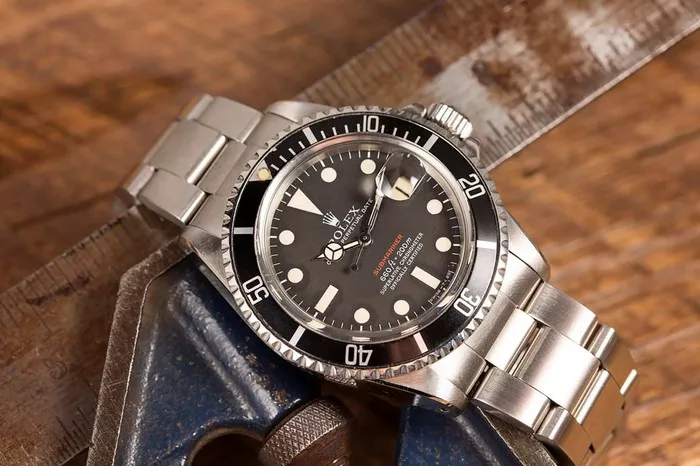Owning a Rolex is a testament to precision and quality, but what happens when your prized timepiece begins to lose time? The intricacies of watch mechanics and the factors influencing timekeeping can be perplexing. In this comprehensive exploration, we unravel the mystery behind why your Rolex might be losing time, delving into the common reasons and potential solutions for maintaining the accuracy of your cherished watch.
Understanding the Mechanics of Rolex Timekeeping:
Rolex’s Reputation for Precision:
Rolex has long been synonymous with precision in the world of horology.
The brand’s commitment to accuracy is a hallmark of its reputation.
In-House Movements:
Rolex designs and manufactures its movements in-house, contributing to the brand’s control over the quality and precision of its timepieces.
In-house movements are a key factor in Rolex’s ability to set high standards for accuracy.
Common Reasons for a Rolex Losing Time:
Magnetic Interference:
Magnetic fields can adversely affect the timekeeping accuracy of a Rolex.
Exposure to strong magnetic fields, such as those found in electronic devices, can magnetize the movement components, leading to time loss.
Shocks and Impact:
Rolex watches are designed to withstand shocks and impact to a certain extent.
However, severe shocks or drops can disrupt the balance wheel and escapement, affecting the watch’s accuracy.
Wear and Tear on Components:
Over time, the components within a watch may experience wear and tear.
Friction, especially in the escapement mechanism, can lead to variations in timekeeping.
Lubrication Breakdown:
The lubricants used in the movement play a crucial role in ensuring smooth functioning.
Over years of use, these lubricants may break down, resulting in increased friction and potential timekeeping issues.
External Factors Influencing Rolex Accuracy:
Temperature Variations:
Extreme temperature changes can impact the lubricants and materials within the watch.
Drastic temperature variations, such as moving from a cold environment to a hot one, may affect the balance wheel’s oscillation rate.
Inconsistent Wearing Patterns:
The accuracy of a mechanical watch can be influenced by consistent wearing patterns.
Regularly wearing and winding the Rolex helps maintain its accuracy.
Troubleshooting and Solutions:
Magnetic Shielding:
Investing in a magnetic shield or storing the watch away from magnetic fields can prevent magnetization.
Some Rolex models, like the Milgauss, are specifically designed with magnetic shielding to counteract these effects.
Regular Servicing:
Routine servicing, approximately every 5-10 years, is essential for maintaining the longevity and accuracy of a Rolex.
A skilled watchmaker can address issues like lubrication breakdown and wear on components during a service.
Shock Avoidance:
While Rolex watches are robust, avoiding severe shocks and impacts is advisable.
When engaging in activities with a higher risk of impact, such as sports, consider removing the watch or using protective measures.
Consistent Wearing and Winding:
Regularly wearing and winding your Rolex contributes to its accuracy.
If not worn daily, consider using a watch winder to keep the movement active.
Temperature Control:
Avoid exposing your Rolex to extreme temperature changes.
Store the watch in a cool, dry place, and refrain from exposing it to prolonged periods of direct sunlight or extreme heat.
The Role of COSC Certification:
Swiss Chronometer Certification:
Many Rolex watches carry the Swiss Chronometer Certification.
This certification attests to the watch’s precision and accuracy, indicating that it has passed rigorous testing standards.
COSC Standards:
The Controle Officiel Suisse des Chronometres (COSC) sets strict standards for accuracy.
A Rolex watch with COSC certification has undergone testing for various positions and temperatures to ensure optimal accuracy.
Conclusion:
In conclusion, the question of why your Rolex is losing time is multifaceted, with several factors influencing the accuracy of the timepiece. Understanding the mechanics of your Rolex, along with common reasons for time loss, allows for informed troubleshooting and preventive measures. From avoiding magnetic interference to maintaining consistent wearing patterns and investing in regular servicing, there are practical steps to ensure your Rolex continues to function with precision. Embracing the heritage of Rolex craftsmanship involves not only wearing the watch but also caring for it diligently to preserve its accuracy and longevity. A Rolex, when treated with care and serviced appropriately, remains a reliable and accurate companion, embodying the brand’s commitment to excellence in horology.

